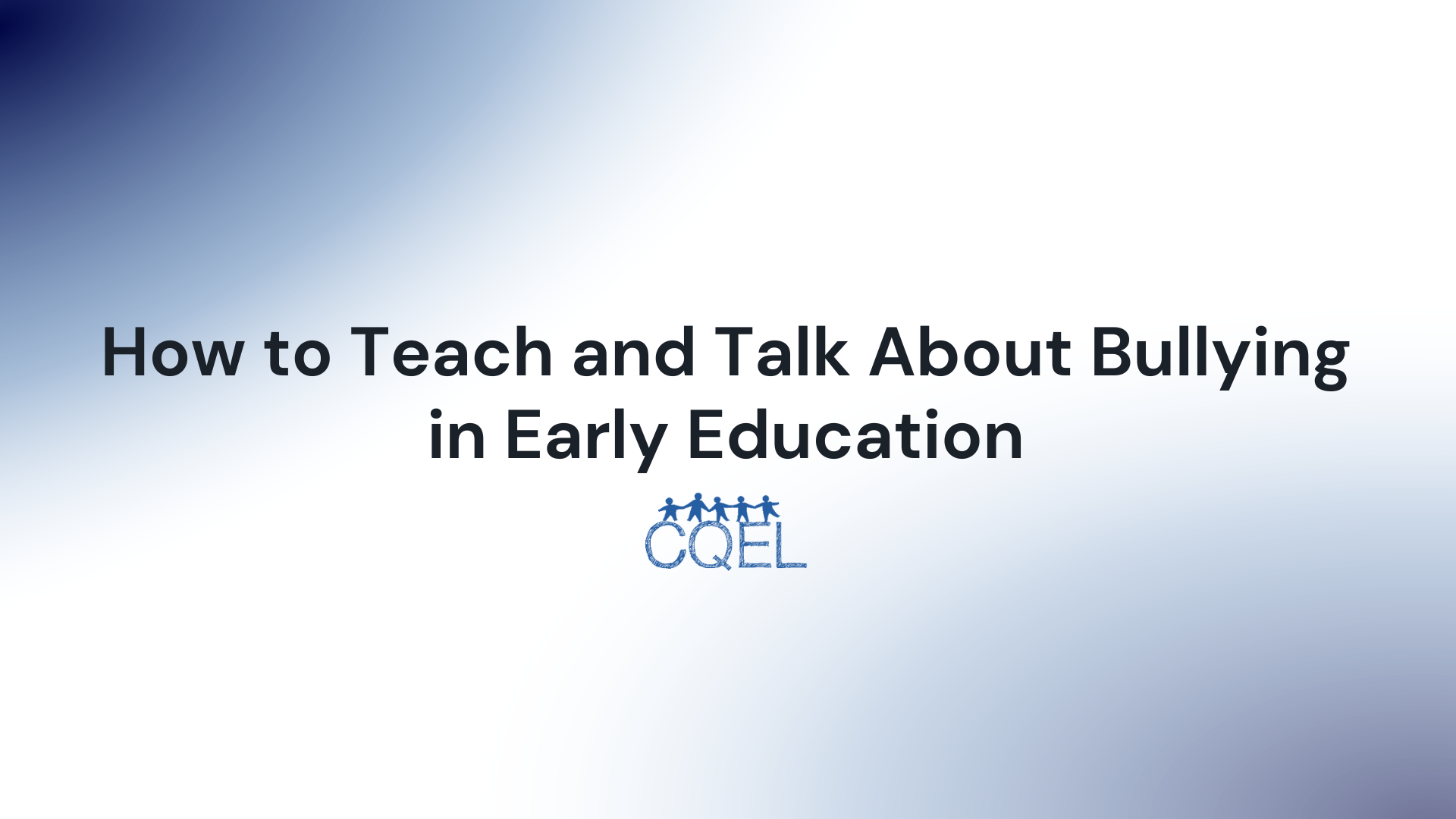How to Teach and Talk About Bullying in Early Education
Bullying is a serious problem that can have a lasting impact on children, both physically and emotionally. It is important to start talking to children about bullying early on, so that they know what it is, how to identify it, and what to do if they are bullied or witness bullying.

Bullying is a serious problem that can have a lasting impact on children, both physically and emotionally. It is important to start talking to children about bullying early on, so that they know what it is, how to identify it, and what to do if they are bullied or witness bullying.
Here are some tips for teaching and talking to children about bullying in early education:
- Start early. You can start talking to children about bullying as early as preschool.
- Use age-appropriate language. When talking to young children about bullying, it is important to use age-appropriate language. Avoid using jargon or technical terms that children may not understand.
- Be honest and open. Children are curious about bullying, so it is important to be honest and open with them about this topic.
- Be positive and inclusive. It is important to teach children about the diversity of the world around them and to promote inclusion.
- Be a role model. Children learn by watching the adults in their lives. Be a role model for children by demonstrating anti-bullying behavior.
Here are some links and resources that teachers and parents can use to teach and talk to children about bullying in early education:
- StopBullying.gov: This website has a wealth of resources on bullying, including lesson plans, activities, and tips for parents and educators.
- National Bullying Prevention Center: This website also has a variety of resources on bullying, including lesson plans, activities, and posters.
- PACER's National Bullying Prevention Center: This website has a number of resources on bullying, including lesson plans, activities, and videos.
- Olweus Bullying Prevention Program: This program is a comprehensive bullying prevention program that has been shown to be effective in reducing bullying in schools.
- BullyFree California: This website has a number of resources on bullying, including lesson plans, activities, and tips for parents and educators.
Here are some specific activities that teachers and parents can do with children to teach and talk to them about bullying:
- Read books about bullying. There are many great books about bullying that can be read to young children. Some examples include Bully Busters: How to Stand Up to Bullies, The Juice Box Bully, and Won't You Be My Friend?*
- Role-play bullying scenarios. This can help children learn how to identify and respond to bullying in a safe and controlled environment.
- Create a bullying prevention poster or slogan. This is a great way to get children thinking about bullying and how to prevent it.
- Talk to children about their own experiences with bullying. If a child tells you that they are being bullied, it is important to listen to them and support them.
- Report bullying to the appropriate adult. If you see or hear about bullying, it is important to report it to the appropriate adult, such as a teacher, parent, or counselor.
By teaching and talking to children about bullying in early education, we can help them develop the skills they need to stand up to bullying and to create a safe and inclusive environment for all.
